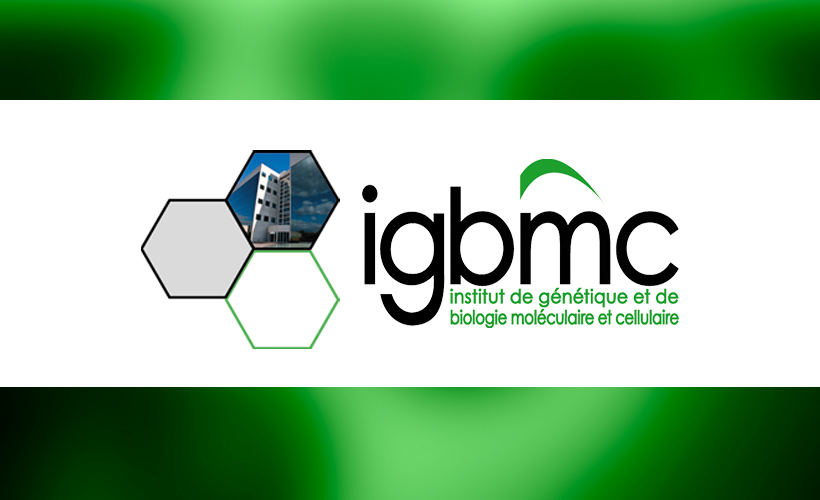Project: “Tissue specificity and molecular crosstalk of steroid hormone receptors”
Aim of the project. The project aims at understanding the molecular mechanisms underpinning the tissue specificity and the crosstalk between steroid hormone receptors through integrative analyses. Our team has recently developed projects based on genomewide characterization of transcription factor cistromes and transcriptomes in various tissues of genetically modified mice, thereby providing the unique opportunity to decipher the in vivo mode of action of nuclear receptors. The fellow’s tasks will be to identify tissuespecific receptor partners and characterize the associated epigenetic marks using cuttingedge technics like Atac-seq, Hi-C and Rapid Immunoprecipitation Mass Spectrometry (RIME). Genome-wide data obtained in various tissues will be strengthened in in vitro models to delineate these complex molecular mechanisms.
The project will be developed at the Institute of Genetics and Molecular and Cellular Biology (IGBMC), the largest French academic research unit, involving INSERM, CNRS and the Strasbourg University. The institute develops interdisciplinary research at the interface of biology, biochemistry, physics and medicine, hosts state-of-the art scientific services and technological platforms, and attracts students from around the world by offering high-level education in biomedical sciences. IGBMC is located at the “Parc d’Innovation d’Illkirch”, an exceptional scientific, academic and industrial environment next to Strasbourg.
We offer a 2-year contract, starting September 2020, with the possibility of extension. Remuneration and social benefits will be based on the CNRS agreement for public-sector employees. The applicant will be involved in a multidisciplinary group including basic scientists, pathologists and bioinformaticians, integrated in international collaborations. She/he will have access to various technologies to perform this scientific project with high clinical relevance.
Requirements. Applicants should have a PhD in biological science, a strong background in molecular biology with a sound knowledge in transcriptional regulation and chromatin remodeling.
Your responsibilities will include:
- Molecular biological assays on tissues of genetically modified mice (ChIP-seq, Atac-seq, imaging, …)
- Establishment of new genome-wide technics using in vivo models
- Bioinformatics analyses
Your application. Candidates should send a curriculum vitae with a publication list, a short summary of research achievements and mastered techniques, as well as contact information of at least two references to metzger@igbmc.frAreas of current research include (i) geographic variation on behavior and life histories, (ii) use of marginal habitats within the geographic distribution, (iii) the influence of climatic extremes, including altitudinal and latitudinal ones, and (iv) the influence of environmental adjustments on reproductive behavior and immunocompetence. On laboratory research, we assess operant conditioning behavior and decision making. Our fieldwork research occurs all over Chile.
Selected publications of the team:
Ando S, Malivindi R, Catalano S, Rizza P, Barone I, Panza S, Rovito D, Emprou C, Bornert JM, Laverny G et al. 2017. Conditional expression of Ki-Ras(G12V) in the mammary epithelium of transgenic mice induces estrogen receptor alpha (ERalpha)-positive adenocarcinoma. Oncogene 36: 6420-6431.
Chambon C, Duteil D, Vignaud A, Ferry A, Messaddeq N, Malivindi R, Kato S, Chambon P, Metzger D. 2010. Myocytic androgen receptor controls the strength but not the mass of limb muscles. Proc Natl Acad Sci U S A 107: 14327-14332.
Duteil D, Chambon C, Ali F, Malivindi R, Zoll J, Kato S, Geny B, Chambon P, Metzger D. 2010. The transcriptional coregulators TIF2 and SRC-1 regulate energy homeostasis by modulating mitochondrial respiration in skeletal muscles. Cell Metab 12: 496-508.
Gali Ramamoorthy T, Laverny G, Schlagowski AI, Zoll J, Messaddeq N, Bornert JM, Panza S, Ferry A, Geny B, Metzger D. 2015. The transcriptional coregulator PGC-1beta controls mitochondrial function and anti-oxidant defence in skeletal muscles. Nat Commun 6: 10210.
Huet T, Laverny G, Ciesielski F, Molnar F, Ramamoorthy TG, Belorusova AY, Antony P, Potier N, Metzger D, Moras D et al. 2015. A vitamin D receptor selectively activated by gemini analogs reveals ligand dependent and independent effects. Cell Rep 10: 516-526. Parisotto M, Grelet E, El Bizri R, Dai Y, Terzic J, Eckert D, Gargowitsch L, Bornert JM, Metzger D. 2018. PTEN deletion in luminal cells of mature prostate induces replication stress and senescence in vivo. J Exp Med 215: 1749-1763.
Rovito D, Belorusova AY, Chalhoub S, Rerra AI, Guiot E, Molin A, Linglart A, Rochel N, Laverny G and Metzger D. Cytosolic sequestration of the Vitamin D Receptor as a therapeutic option for vitamin D–induced hypercalcemia. Nature Communication, in revision.




